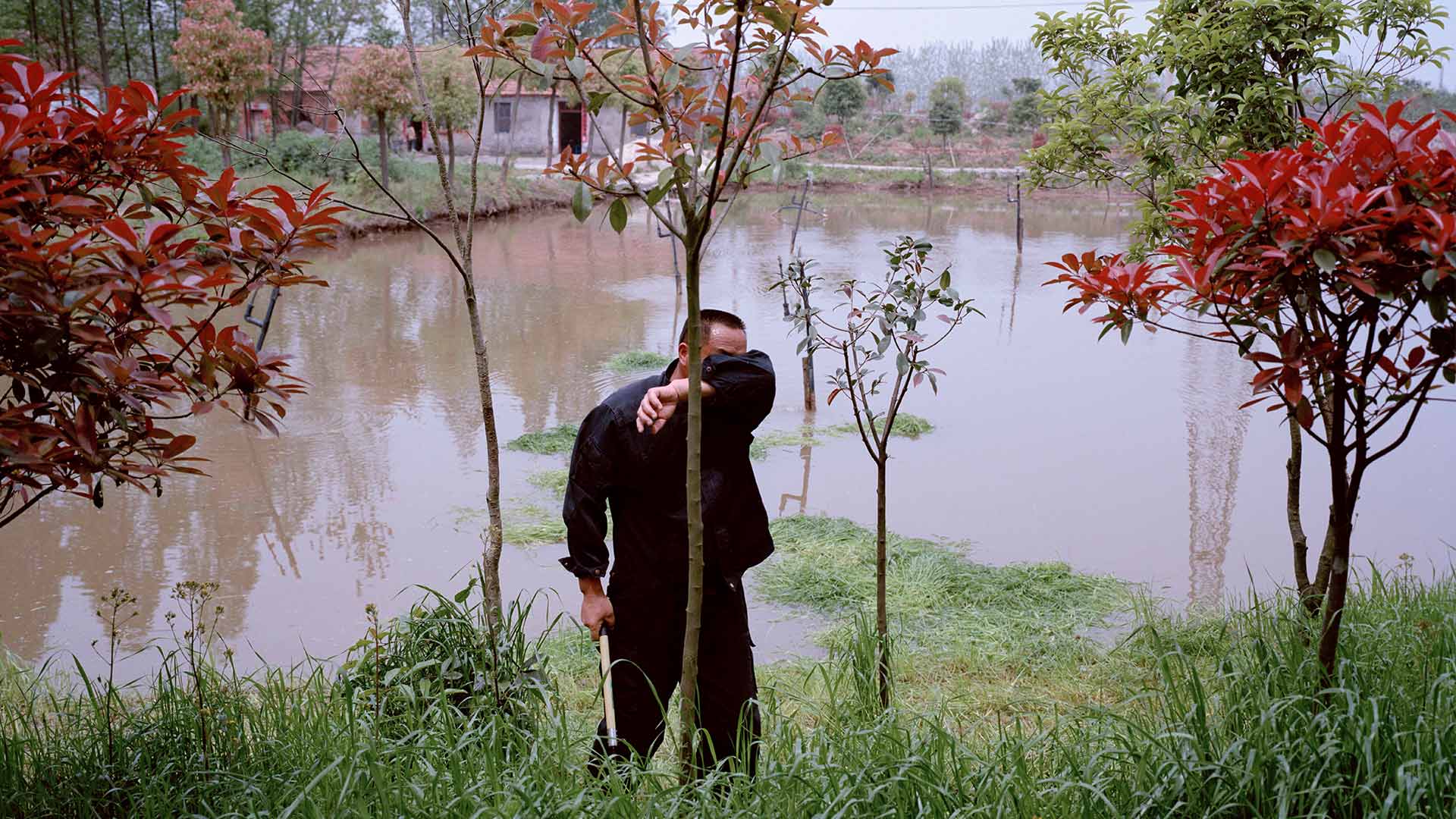Five Powerful Works to See at This Exhibition Dedicated to Raising Awareness Around the Global Water Crisis
A vital resource under threat, captured in images.
In partnership with
Water. It covers a whopping 71% of Earth and makes up roughly 60% of the human body. After three days, we'd perish without it. It's the universal, life-giving resource that our globe depends on. But as we speak, it's drying up. It's being overused, and due to poor sanitation and pollution, too many people around the world are without access to clean water. This precious resource is under serious threat.
The UN estimates that two-thirds of the globe will face serious water shortages by 2025. However, in Australia it's all too easy for us to take water for granted. World Wildlife Fund (WWF) Australia CEO Dermont O'Gorman explains, "Australians understand water challenges due to the droughts and floods that affect our cities and rural communities alike, but might be missing how these challenges are interconnected to these very pressing geo-political issues as well."
Photographer Mustafah Abdulaziz has witnessed the people and places already being seriously impacted. Camera in-hand, the 31-year-old documented the crisis across four continents to produce his latest exhibition, Water Stories: The Global Water Crisis in Images. Part of a larger project with the HSBC Water Programme, and in partnership with WWF, Earthwatch and WaterAid, the exhibition aims to approach the world water crisis via images of the people, landscapes and nature affected. "Water Stories shows how people in other countries deal with similar water challenges as us, but also with issues we are lucky enough not to have to face, like access to safe drinking water and sanitation," says O'Gorman.
For the exhibition's Australian premiere, we spoke with Mustafah Abdulaziz to learn about five of the images whose stories have left a lasting impression on him. Here, we take you through the powerful scenes captured by Abdulaziz and the meaning behind these global snapshots.
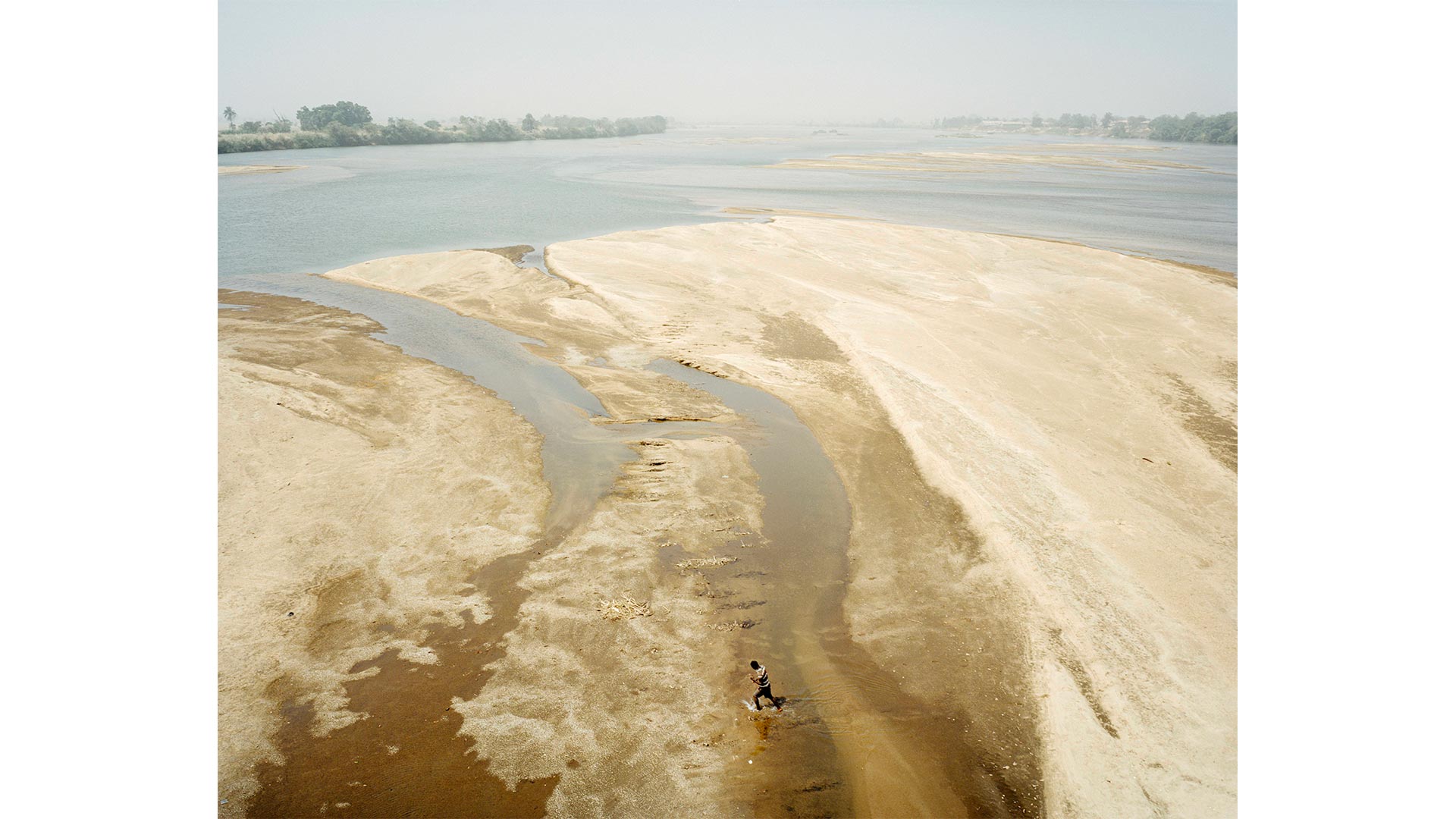
BENUE RIVER, NIGERIA. (2015)
Sometimes, the significance of a photograph takes time to be revealed. As such, it requires moments of stillness to be fully understood. Captured back in 2015 on Nigeria's Benue River, a man strides across a shallow stream. Abdulaziz sees this shot as the culmination of his project, a simple image encompassing "the painful beauty of lacking".
Nigeria's landscape speaks to feelings of absence. The terrain, a vague blur bleeding into the horizon. Consequently the lone figure in the image "is us, pushing through time and our environment, perhaps to get somewhere better or to escape from something worse," says Abdulaziz.
Its a complex and provocative shot. Two forces meet, revealing "man and nature... together in this scene, beautiful and contrasting in scale between each other, but nevertheless entwined."
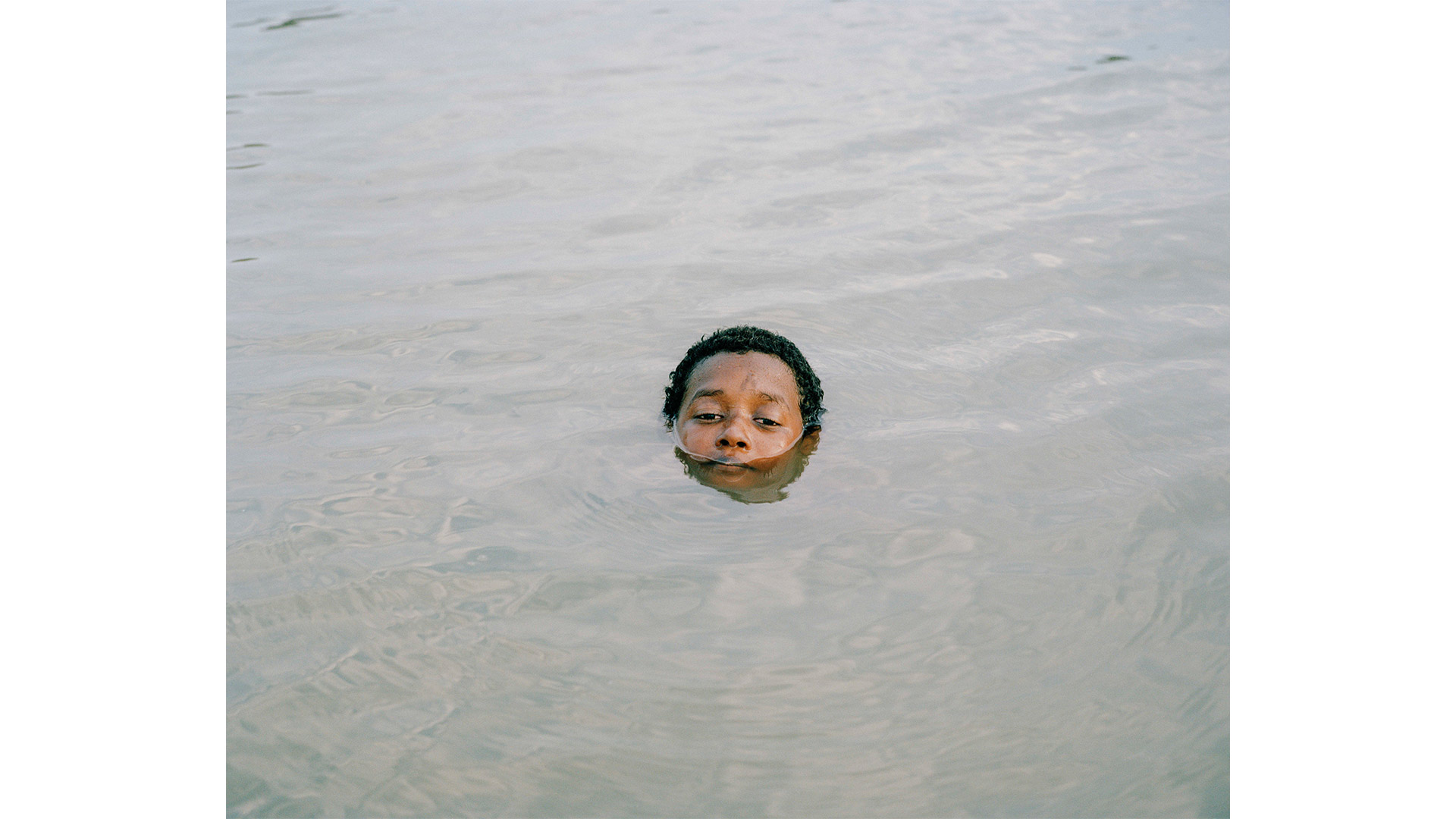
CLAUDIO, PARAGUAY RIVER, MATO GROSSO, BRAZIL. (2015)
Getting to the guts of a problem means getting your hands dirty. Sometimes, literally. During this shoot in Brazil's Mato Grosso along the Paraguay River, Abdulaziz studied the community of families living alongside this heavily polluted waterway. And for this image, the photographer had to follow the locals right into the depths of the dirty waters.
The boy in question here is Claudio, one of the many village kids that swim and play in the murky canal, where initial pollution took place mere metres downstream — a testament to the proximity of the global water crisis to various communities. Portraits like this offer a window into the living, breathing humans implicated by this mess. Most of all, this photograph looks back at us, "staring up at the viewer, our faces and fate half in the water, surrounded by the reality we've manifested: a surface of dull, oily water we cannot escape from," explains Abdulaziz.

CHILDREN JOURNEY TO COLLECT WATER, SINDH, PAKISTAN. (2013)
It's hard to picture something you've never experienced. For us, running water, the ability to wash daily, drinking from the tap or from chic, minimalistic glass bottles, are all things we can so easily take for granted. For children in Sindh, Pakistan, however, water is the reason they miss school. Instead, they're forced to trek through the desert to find fresh water. These hours lashed by wind and heat are a daily ritual, one which struck Abdulaziz on a deeply personal level.
Recalling William Golding's dystopian tale Lord of the Flies, this practice of water collection presented a humbling display of necessity and endurance. These children, like Golding's group of British schoolboys, are forced to fight for survival. Abdulaziz explains, "their personality, dreams and desires are irrelevant in the face of their greater need for water. This is the power that water holds over many."
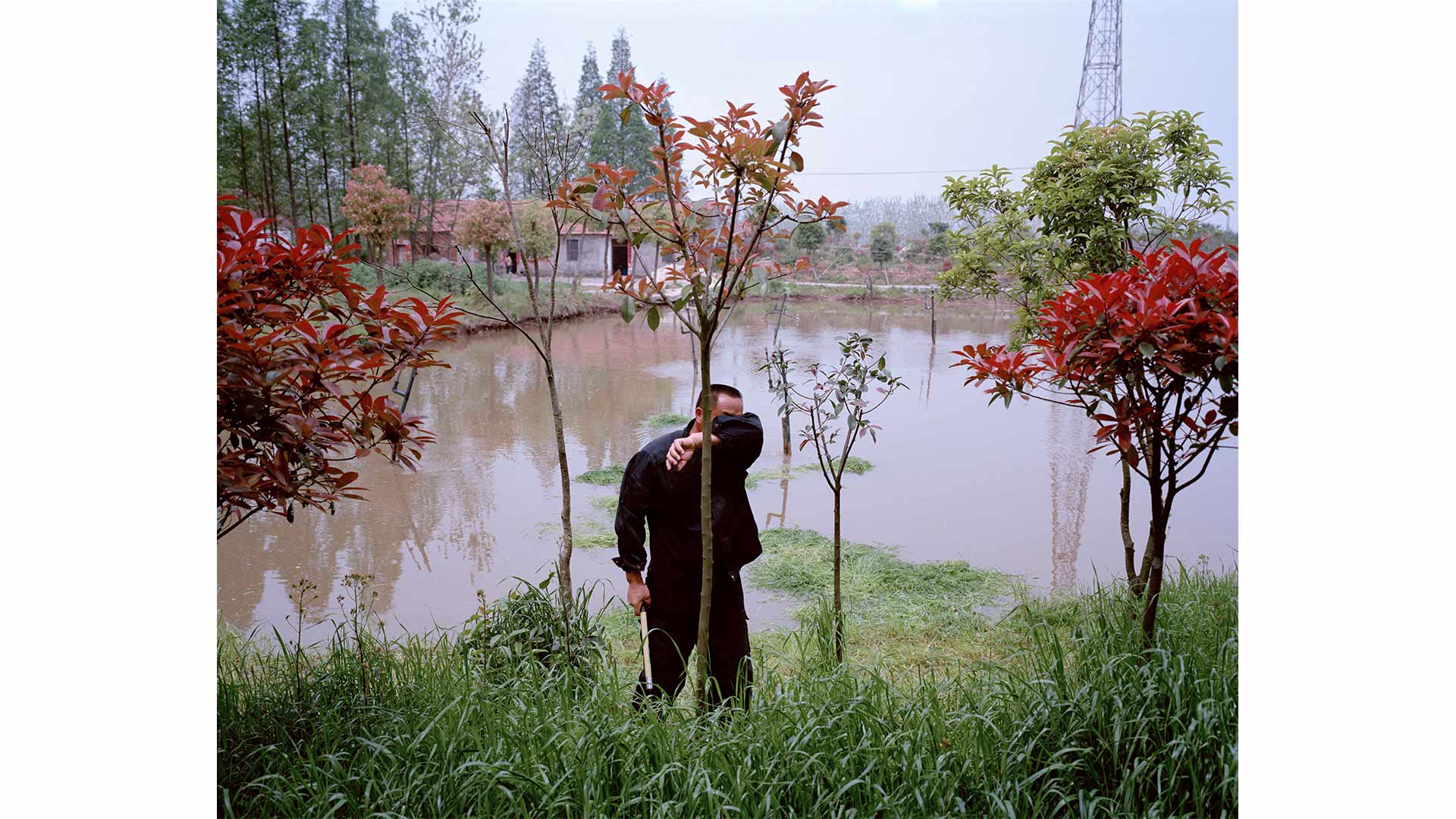
A FISH FARMER CUTS GRASS TO FEED CARP, HUBEI PROVINCE, CHINA. (2015)
Undoubtedly one of the world's most vibrant countries, China, its spirit and its rich history are not so easy to capture. Bursting with over 1.3 billion residents, its a place difficult to keep still. However, Abdulaziz managed to do just that, and the result is a photograph that reads almost as an inconsequential moment — an arm covering the face of an anonymous man in an undisclosed location, hardly worth our attention.
Such ambiguity is deliberate, Abdulaziz reveals. "I wished to photograph it all as though it was a silent film, where scenes of intensity or drama were muted." And the effect proves to jar and engage the observer. Void of clarity or explanation, the bewildered spectator is forced to decipher meaning and significance for themselves. Abdulaziz sees the image as "a moment between moments, meaningless in itself, but a reminder of something beautiful within the complexity of larger things." This stillness captured is nondescript, an everyday moment in time, but it also reminds how the water crisis is just that, an everyday status for many.
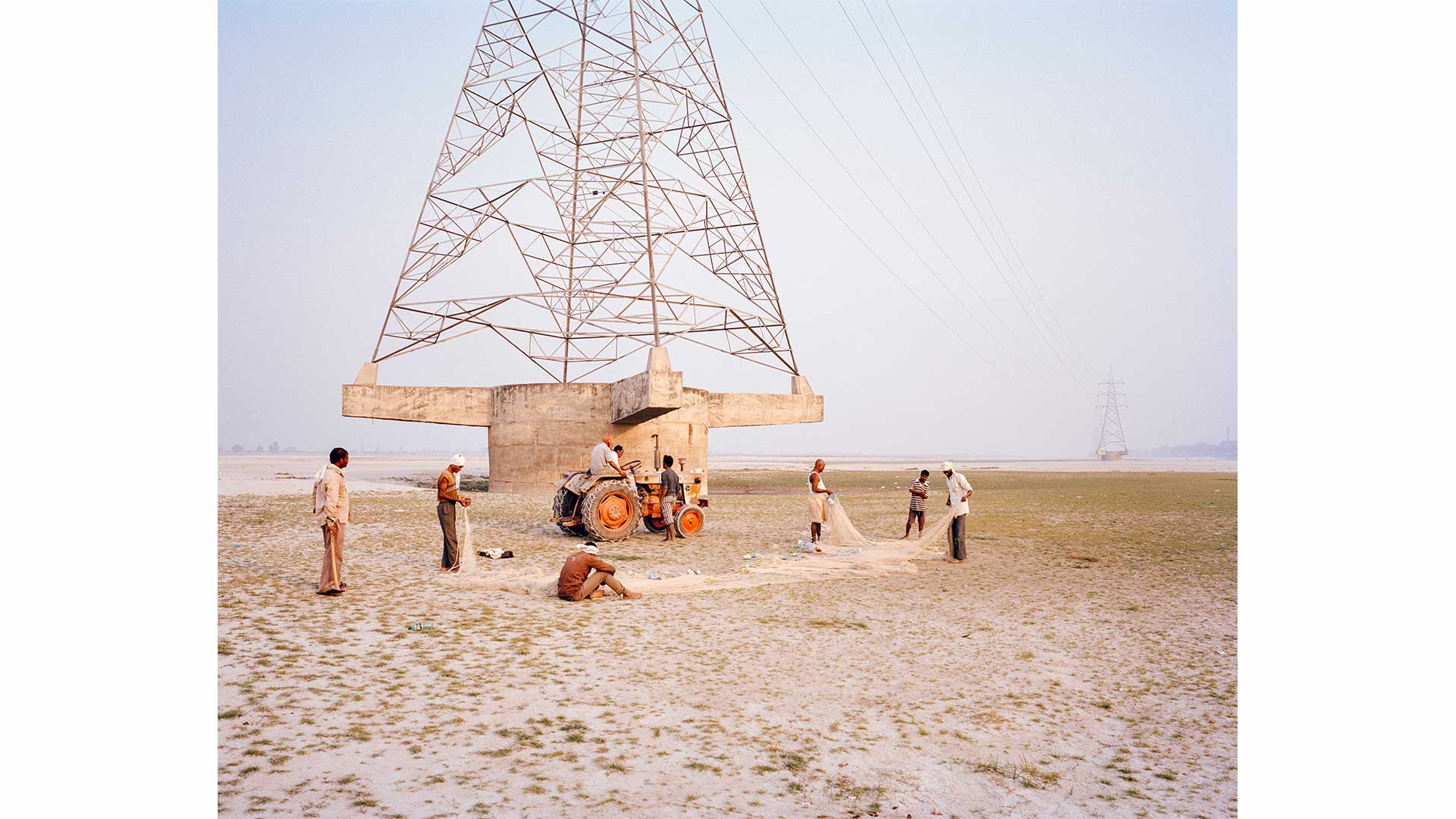
DRIED RIVER BED, KANPUR, INDIA. (2014)
Humans exist at the heart of the global water crisis. The factors at play vary, but one thing that remains constant is how we'll all be the ones to bear the consequences. The concern for life is fundamentally in question.
During Abdulaziz's 2014 trip to Kanpur, this image was taken near the heavily polluted Ganges River, India's largest river and the world's fifth most polluted. What resulted proves to be an exercise in documentation and creative expression, delivered in equal measure. Abdulaziz explains, "there's something post-apocalyptic about the scene, where huge man-made structures rise up from a barren landscape and man himself, small in comparison, clusters together to repair a broken net." An image such as this leaves a mark. It inspired a new tact for Abdulaziz's photography, hoping to capture "a unifying perspective on the intertwining story of water and mankind." Notably for us, it demands conversation and, most of all, a drive towards change.
Mustafah Abdulaziz's exhibition Water Stories: The Global Water Crisis in Images showed at Sydney's Royal Botanic Garden from Tuesday, August 15 to Tuesday, September 5. Now, the exhibition moves to Brisbane, opening on Friday, September 15. See Water Stories until Tuesday, September 26 on the South Bank Lower Boardwalk below the Clem Jones Promenade. The exhibition will be illuminated at night.
